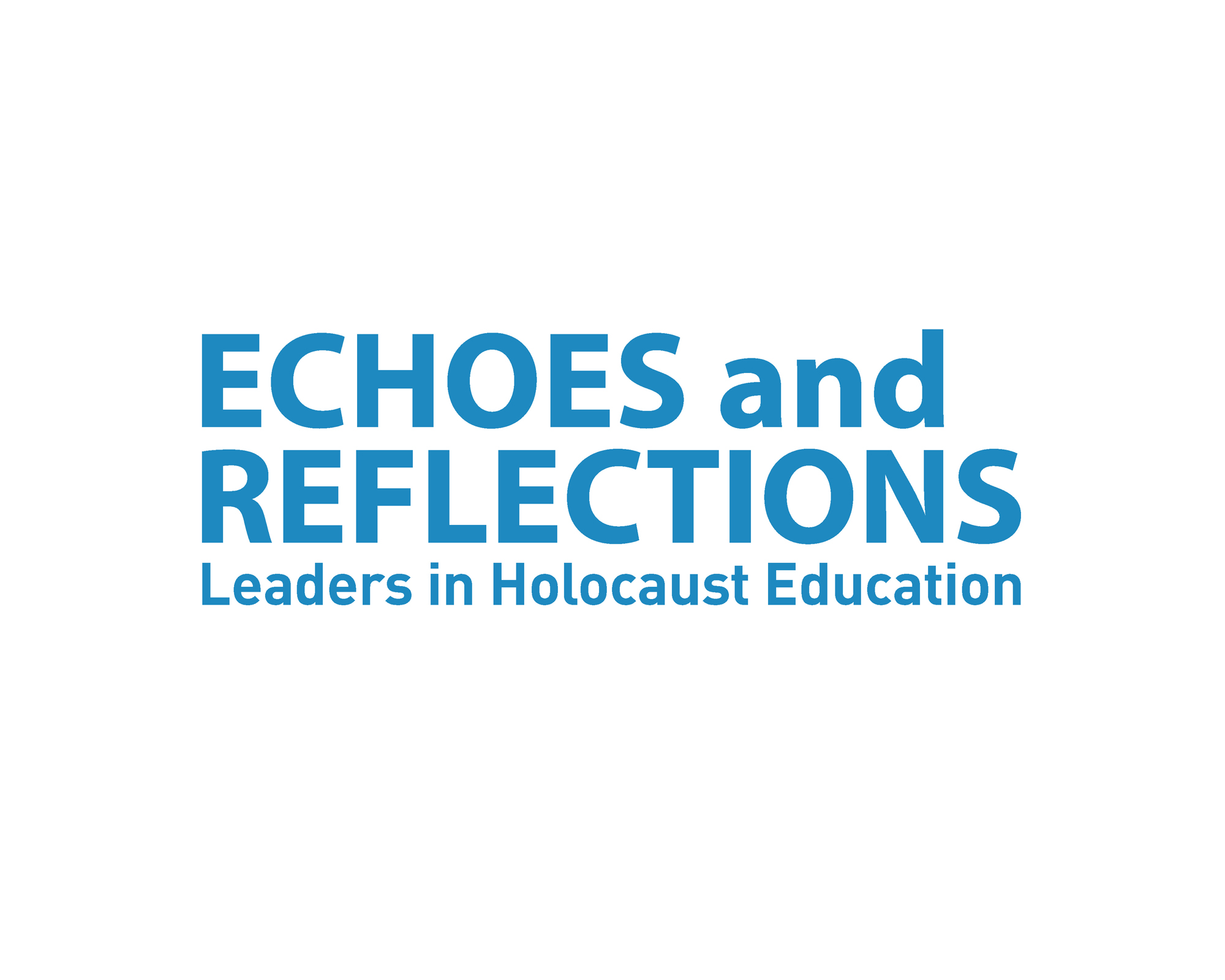Back to School with Echoes and Reflections - Part 7

Today continues a 10-part series called “Back to School with Echoes and Reflections.” Each installment takes a detailed look at one of the 10 Echoes and Reflections lessons.
Echoes and Reflections is a multimedia professional development program for secondary school teachers in the United States that provides them with accurate and authentic Holocaust information for their classrooms. Programs are held around the country at no cost to teachers or schools, and participants receive a complimentary copy of the 10-part Teacher’s Resource Guide that equips them with the tools they need to help today’s students study the Holocaust as a significant event in human history.
Echoes and Reflections combines the resources and competencies of three world leaders in education―the Anti-Defamation League’s experience in curriculum and professional development, access to USC Shoah Foundation’s Visual History Archive of survivor and witness testimonies and digital educational tools, and Yad Vashem’s historical expertise and primary source materials―resulting in the most comprehensive Holocaust education program available.
Echoes and Reflections includes everything educators need to teach the complex issues of the Holocaust. Each lesson within the Echoes and Reflections Teacher’s Resource Guide explores a different aspect of the Holocaust and encourages students in grades 6-12 to build an authentic and comprehensive portrait of the past as they frame their own thoughts, resulting in a deeper level of interest and inquiry.
The modular design of the Echoes and Reflections Teacher’s Resource Guide includes photographs, literature, artwork, diary entries, government documents and other primary source materials that teachers may easily photocopy and distribute to students. Lessons also incorporate testimony from USC Shoah Foundation’s Visual History Archive on DVD Each lesson addresses Common Core State Standards, and each one has been integrated into IWitness. IWitness is USC Shoah Foundation’s educational website that provides students and teachers access to more than 1,300 full life histories and testimonies of survivors and witnesses to the Holocaust and other genocides from the Visual History Archive for guided exploration, multimedia projects, activities and lessons.
To date Echoes and Reflections has prepared almost 20,000 educators and community leaders across the United States to use the Teacher’s Resource Guide effectively. Teachers interested in more information about Echoes and Reflections should contact echoes@adl.org.
Lesson 7: Rescuers and Non-Jewish Resistance
Lesson 7 introduces students to non-Jewish individuals who risked their own lives to rescue Jews during the Holocaust. Teachers are encouraged to preface the lesson by explaining that these rescuers were the exception, not the rule, as most non-Jews were bystanders, and that most rescue attempts failed and both the rescuer and victim were murdered.
Students should also be cautioned against thinking of the rescuers as “perfect” or “angelic” people who are not relatable to students today. Instead, rescuers were ordinary people with faults of their own who performed extraordinary acts.
Students begin the lesson by brainstorming definitions of the word “altruism.” They watch clips of testimony from two rescuers, Arie Van Mansum and Leslie Banos, and discuss the reasons each gives for wanting to help Jews, what they did, and the risks they faced.
Teachers ask students to consider the consequences a bystander faces when he or she chooses to no longer be a bystander, and if this transition is an example of altruism.
Students read handouts about a variety of rescue efforts including the Danish underground, which saved nearly the entire Jewish population of Denmark, Oskar Schindler’s factory and Miep Gies’ role in hiding Anne Frank.
The lesson then turns to Yad Vashem’s Righteous Among the Nations, an honor given to individuals who actively attempted to save Jews during the war despite personal mortal risk and lack of monetary compensation. Students discuss the criteria for receiving the award and the number of honorees in each country.
Finally, students watch testimony from Kristine Keren, who hid in sewers with her family during the Holocaust, and Ursula Levy, who lived under a false identity in a convent. The testimonies reveal the incredible difficulties people faced while hiding and provide a jumping-off point for students to reflect on the impact of listening to testimony.
Next week – Lesson 8: Survivors and Liberators
Lesson 1: Studying the Holocaust
Like this article? Get our e-newsletter.
Be the first to learn about new articles and personal stories like the one you've just read.